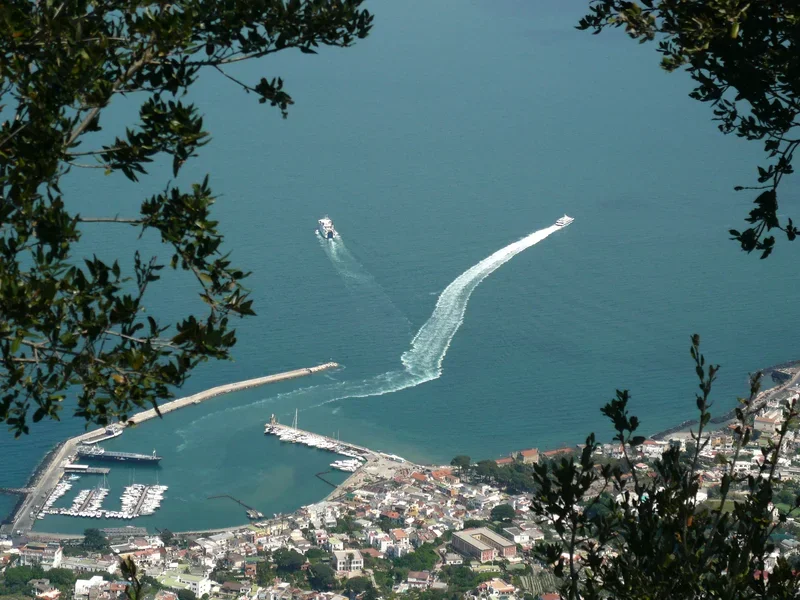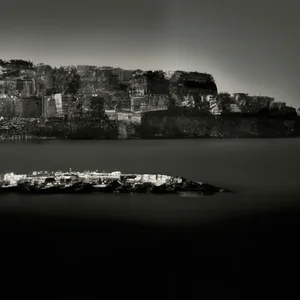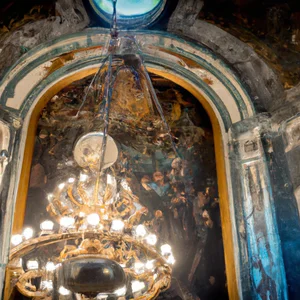Book your experience
Solfatara of Pozzuoli
The Solfatara of Pozzuoli is one of the most fascinating and evocative places in Campania, a real jewel set in the heart of the Campi Flegrei Park. This volcanic site, famous for its geothermal phenomena, attracts thousands of visitors every year, eager to discover the natural and historical wonders that characterize it. The origins of this place date back to millennia ago, when volcanic activity shaped the surrounding landscape, creating a unique environment rich in biodiversity.In this article, we aim to explore the Solfatara through ten key points, which will offer a comprehensive overview of this extraordinary site. We will start with a dive into the history of the Solfatara, to understand how it was formed and how it influenced the lives of the people who live there. We’ll then look at the geology and volcanic phenomena that make this place so special, before providing practical information on how to get there, opening times and entry costs.The main attractions and activities available will offer interesting ideas for those who wish to immerse themselves in nature and discover the routes that the Solfatara has to offer. We will not fail to also address the issue of safety and precautions to be taken during the visit, as well as the local flora and fauna that enrich this ecosystem. Finally, we will focus on events, manifestations and the fascinating legends surrounding the Solfatara, to give readers a complete and stimulating vision of this magical place. Get ready for a journey that combines nature, history and culture in the heart of the Campi Flegrei!
History of the Solfatara
The Solfatara is a volcano located in the Campi Flegrei, an area of great geological and archaeological interest near Naples. Its history is fascinating and has been intertwined with the events of man since ancient times.
Origins and antiquities
The first historical evidence regarding the Solfatara dates back to the Roman era, who used its fumaroles for therapeutic and recreational purposes. Already in the 1st century AD, the Roman geographer Strabo described the Solfatara as a place of volcanic activity, highlighting its emissions of steam and gas.
Use in the Middle Ages and Renaissance
During the Middle Ages, the Solfatara continued to be a point of reference for the scientists and doctors of the time, who studied the healing properties of its mud and water. In the Renaissance, the volcano attracted the attention of artists and intellectuals, becoming the object of scientific studies and works of art.
Modern volcanic activity
The period between 1600 and 1800 saw intense eruptive activity in the area, with explosions and fumaroles that changed the landscape. However, Solfatara is currently considered a quiescent volcano, although it continues to emit vapors and gases, a sign of its active volcanic nature.
Recognition and protection
Today, the Solfatara is part of an archaeological and natural park, recognized for its scientific and cultural importance. It is a place of study for volcanologists and geologists, as well as a tourist destination for those who wish to explore the wonders of nature and history.
Geology and volcanic phenomena of the Solfatara
The Solfatara is one of the most famous fumaroles of the Campi Flegrei volcanic complex, located a few kilometers from Naples. This place is characterized by intense volcanic activity which manifests itself through unique geothermal phenomena, offering a fascinating overview of the geology of the region.
Origin and formation
The Solfatara is the result of volcanic activity that dates back thousands of years. Its formation is linked to an eruption that occurred about 4,000 years ago, when the magma rose to the surface, creating a crater that today hosts fumaroles and thermal springs. The presence of sulphur, which gave its name to the place, is due to the decomposition of volcanic minerals and the escape of volcanic gases.
Geothermal phenomena
Inside the Solfatara, visitors can observe various geothermal phenomena:
- Fumaroles: Openings in the ground that emit vapors and gases, mainly water vapor and carbon dioxide.
- Thermal springs: Hot waters that flow from the ground, rich in minerals and used therapeutically.
- Volcanic mud: A mixture of water and minerals that forms in areas of geothermal activity, used for beauty and healing treatments.
Recent volcanic activities
In recent years, the Solfatara has shown signs of volcanic activity, with small eruptions and variations in the temperature of the fumaroles. These events are constantly monitored by the Vesuvian Observatory, which studies the trend of volcanic activity and provides safety information to visitors.
Scientific importance
The Solfatara is an important natural laboratory for geologists and volcanologists, who study it to better understand volcanic phenomena and the dynamics of the Earth. Its accessibility and unique characteristics make it an ideal observation point for those interested in geology and volcanology.
Conclusion
The Solfatara represents not only a tourist attraction, but also an important source of scientific knowledge. Its geology and volcanic phenomena offer a fascinating glimpse into the power of nature and the volcanic history of the Campi Flegrei region.
How to get to the Solfatara
By Car
If you wish to reach Solfatara by car, you can take the A56 motorway (Naples ring road) and exit at Fuorigrotta. Follow the signs for Pozzuoli and then for Solfatara. There is parking available nearby, but it is advisable to arrive early, especially on weekends, to find a spot.
By public transport
If you prefer to use public transport, you can take the underground Line 2 to Pozzuoli station. From the station, you can take a bus (R2 line) which will take you directly to the Solfatara entrance. Alternatively, you can also reach Pozzuoli by train and then continue on foot, enjoying the landscape.
Additional Information
It is also possible to reach Solfatara by taxi or via ride-sharing services, which can be a convenient option if you are traveling in a group or with a family. Be sure to check traffic conditions, especially during high tourist seasons.
Opening Times and Costs
Opening Hours
The Solfatara is open to the public every day, with opening hours that may vary depending on the season. In general, the times are as follows:
- From March to October: 9:00 - 19:00
- From November to February: 9:00 - 17:00
It is recommended to check the official website for any changes or extraordinary closures due to weather conditions or particular events.
Entry Costs
The cost of the ticket to access the Solfatara is as follows:
- Adults: €12.00
- Reduced (for students and over 65s): €9.00
- Free: for children under 6 years old and for disabled people with a companion
You can purchase tickets directly at the ticket office at the entrance or online through the official website, where special packages for groups or guided tours are also available.
Additional Information
We recommend checking for any promotions or special events that may affect entry costs. Furthermore, for a more in-depth visit, it is possible to book guided tours, which may have additional costs but offer a richer and more informative experience.
Main attractions of the Solfatara
La Solfatara, located in the municipality of Pozzuoli, is one of the most fascinating and unique places in the Campi Flegrei, offering various natural and geological attractions that attract visitors from all over the world. Here are some of the main attractions that can be found on this fascinating site.
The Solfatara Crater
The crater is the main attraction of the Solfatara. With a diameter of approximately 700 metres, it is characterized by active fumaroles that emit water vapor and sulphurous gases. This phenomenon offers a unique opportunity to closely observe ongoing volcanic activity.
Fumaroles and Mud Pools
Fumaroles are openings in the Earth’s crust that release gas and steam. In the Solfatara, these fumaroles are particularly active and produce a strong sulfur odor. Furthermore, the mud pools, which reach high temperatures, are an added attraction, as volcanic mud is considered to have therapeutic properties.
The Mud Pool
Another interesting attraction is the mud pool, which is often used by visitors for beauty and wellness treatments. This mud is rich in minerals and is considered beneficial for the skin.
Nature trails and routes
The Solfatara also offers various paths and nature trails that allow you to explore the crater and its geological peculiarities. These routes are signposted and allow you to discover the flora and fauna that inhabit the area.
Visitor Center
Within the Solfatara area there is a visitor center where tourists can receive detailed information on the history and geology of the place. Here it is also possible to take part in guided tours to learn more about the area.
In summary, the Solfatara is not only a place of extraordinary natural beauty, but also an important testimony to the volcanic activity of the region. Its attractions make the visit an educational and fascinating experience.
Activities and routes at the Solfatara
The Solfatara of Pozzuoli is an area of great geological and naturalistic interest, which offers visitors various activities and routes to explore this fascinating place.
Guided tours
Guided tours are available and recommended to fully understand the geological and volcanic peculiarities of the Solfatara. The expert guides provide detailed information on the volcanic phenomena and the history of the place, making the experience educational and engaging.
Trekking routes
There are well-signposted trekking routes that allow you to explore the surrounding area. These paths lead to panoramic points where it is possible to admire the Solfatara crater and observe the various fumarolic activities.
Observation of natural phenomena
One of the most fascinating activities is the observation of natural phenomena, such as fumaroles and boiling mud lakes. Visitors can get close to these natural manifestations, always maintaining a certain distance for safety reasons.
Educational laboratories
For school groups and families, Solfatara offers educational workshops that allow you to learn interactively about volcanic processes and geology. These workshops are designed to be engaging and stimulating for all ages.
Nature photography
Enthusiasts of nature photography will find in the Solfatara a unique environment for capturing evocative images. The fumaroles, the lunar landscape and the chromatic variations of the terrain offer many photographic opportunities.
Picnic and rest areas
There are also some designated picnic areas where visitors can relax and enjoy an outdoor meal after exploring the area. It is important to respect the environment and take away waste.
In summary, the Solfatara offers a variety of activities and routes that meet the needs of all visitors, making the visit not only a leisure experience, but also an opportunity for learning and discovery.
Rumors and legends of the place
The Solfatara, located in the Campi Flegrei, is a place rich in history and mythology, with numerous rumors and legends circulating among visitors and local inhabitants.
The myth of Vulcan
One of the most famous legends associated with the Solfatara concerns Vulcan, the Roman god of fire and volcanoes. It is said that the fumaroles and vapors that come out of the earth are the result of the work of Vulcan, who forged weapons for the gods. The Solfatara is seen as one of its forges, and the dull noises and vapors rising from the earth are interpreted as a signal of its activity.
The story of Hercules
Another popular legend tells of Hercules, the mythical hero, who stopped at the Solfatara during one of his journeys. According to the story, Hercules faced a monstrous creature that hid among the vapors and fumaroles. This story gave rise to many narratives and tales of epic adventures that have been passed down over time.
The mystery of the healing waters
The Solfatara is also associated with legends regarding its healing waters. It is said that the thermal waters and muds present in the area have miraculous powers, capable of healing illnesses and ailments. Over the centuries, this belief has attracted visitors in search of well-being and health, fueling the idea that the Solfatara is a place of magic and healing.
Rituals and superstitions
Finally, over the years, the Solfatara has become a place of rituals and superstitions. Some local inhabitants practice traditional ceremonies to bring good luck or ward off evil spirits, making the site not only a tourist attraction, but also a place of worship and respect for the forces of nature.
These rumors and legends continue to arouse the interest of those who visit the Solfatara, making the experience not only a geological and naturalistic study, but also a journey into the history and culture of the place.
Local flora and fauna of the Solfatara
The Solfatara, located in the Campi Flegrei near Naples, is an area of great interest not only for its geological phenomena but also for its biodiversity. Despite the volcanic terrain and extreme conditions, the local flora and fauna have adapted to these peculiarities.
Flora
The vegetation of Solfatara is mainly characterized by plants resistant to heat and poor soil. Among the most common plant species, we find:
- Artemisia vulgaris: a herbaceous plant that grows in disturbed soil and has aromatic properties.
- Thymus vulgaris: thyme, an aromatic plant that thrives in hot, dry climates.
- Brassica oleracea: a variety of cabbage that adapts well to volcanic conditions.
- Salvia officinalis: sage, known for its aromatic and medicinal properties.
These plants are often accompanied by other species typical of volcanic environments, which contribute to creating a unique and fascinating ecosystem.
Fauna
The fauna of the Solfatara is less visible than the flora, but it is still present. Among the animals that populate the area, we can find:
- Insects: various types of insects, including butterflies and bees, which play an important role in the pollination of local plants.
- Birds: several species of birds that feed on insects and seeds, including sparrows and pigeons.
- Reptiles: such as lizards and snakes, which adapt well to the heat and can be found in rocky areas.
- Small mammals: such as mice and other rodents, which find refuge among the vegetation.
It is important to note that the fauna of the Solfatara is influenced by volcanic phenomena, which can create unique habitats but also challenges for the survival of the animals.
Conservation
La Solfatara is a place of great ecological value, and efforts are underway to preserve its biodiversity. It is essential that visitors respect the rules of the park and do not disturb the natural habitats, in order to guarantee the survival of local species and the conservation of this unique environment.
Events and demonstrations
La Solfatara, located in the heart of the Campi Flegrei, is not only a place of great geological and naturalistic interest, but also a site that hosts events and displays throughout the year. These events attract tourists and locals, offering a unique opportunity to explore the natural beauty and culture of this volcanic area.
Cultural and scientific events
The Solfatara is often the scene of conferences and seminars dedicated to geology, volcanology and environmental sustainability. Universities and research institutes organize events to raise public awareness of volcanic phenomena and the importance of environmental conservation.
Guided visits and special tours
During the year, special guided tours are organised, particularly in the spring and autumn months, when the weather conditions are more favourable. These tours offer insights into the geological history of the Solfatara and its natural phenomena.
Local festivals and celebrations
The Solfatara and the Campi Flegrei also host festivals that celebrate local culture, gastronomy and traditions. During these events, visitors can taste typical Neapolitan cuisine, watch folklore shows and participate in craft workshops.
Seasonal events
In summer, the Solfatara becomes a meeting place for evening events, such as concerts and film screenings outdoors, which offer a unique experience in a natural environment extraordinary. The events are often accompanied by activities for families and children, making them suitable for all ages.
Importance of participation
Participating in these events not only enriches the visitor’s experience, but also contributes to supporting the local community and promoting knowledge and valorisation of the Solfatara and Campi Flegrei as natural and cultural heritage.
Voices and legends of the place
The Solfatara of Pozzuoli, one of the active volcanic craters of the Campi Flegrei, is surrounded by a series of legends and popular tales that have been handed down over time, contributing to its charm and mystery.
The legend of Virgil
One of the most famous legends is the one involving Virgil, the famous Roman poet. It is said that Virgil was a magician and that he used the powers of the Solfatara to compose his works. According to tradition, the poet buried a magic book inside the Solfatara, capable of giving whoever found it immense knowledge. This legend has attracted many curious and occult enthusiasts over the centuries.
The mystery of the “ghosts” of Pozzuoli
Another popular legend tells of spirits or ghosts that wander around the Solfatara. It is said that the souls of those who were victims of eruptions or who lost their lives due to volcanic activity still wander near the crater. These stories of apparitions and ghostly encounters have fueled the collective imagination, making the site a place of interest for mystery lovers.
The Dragon of Pozzuoli
Another legend states that a dragon inhabited the depths of the Solfatara. According to the tale, the dragon was a guardian of the crater, protecting its secrets and riches. Only those who demonstrated true courage and a pure heart could approach without fearing the dragon’s wrath. This legend is often told to children to teach them the value of courage and virtue.
The Solfatara, therefore, is not only a place of geological interest, but also a crossroads of stories and legends that enrich its history and cultural importance. Visiting this extraordinary site, it is impossible not to feel its atmosphere full of mystery and magic.































